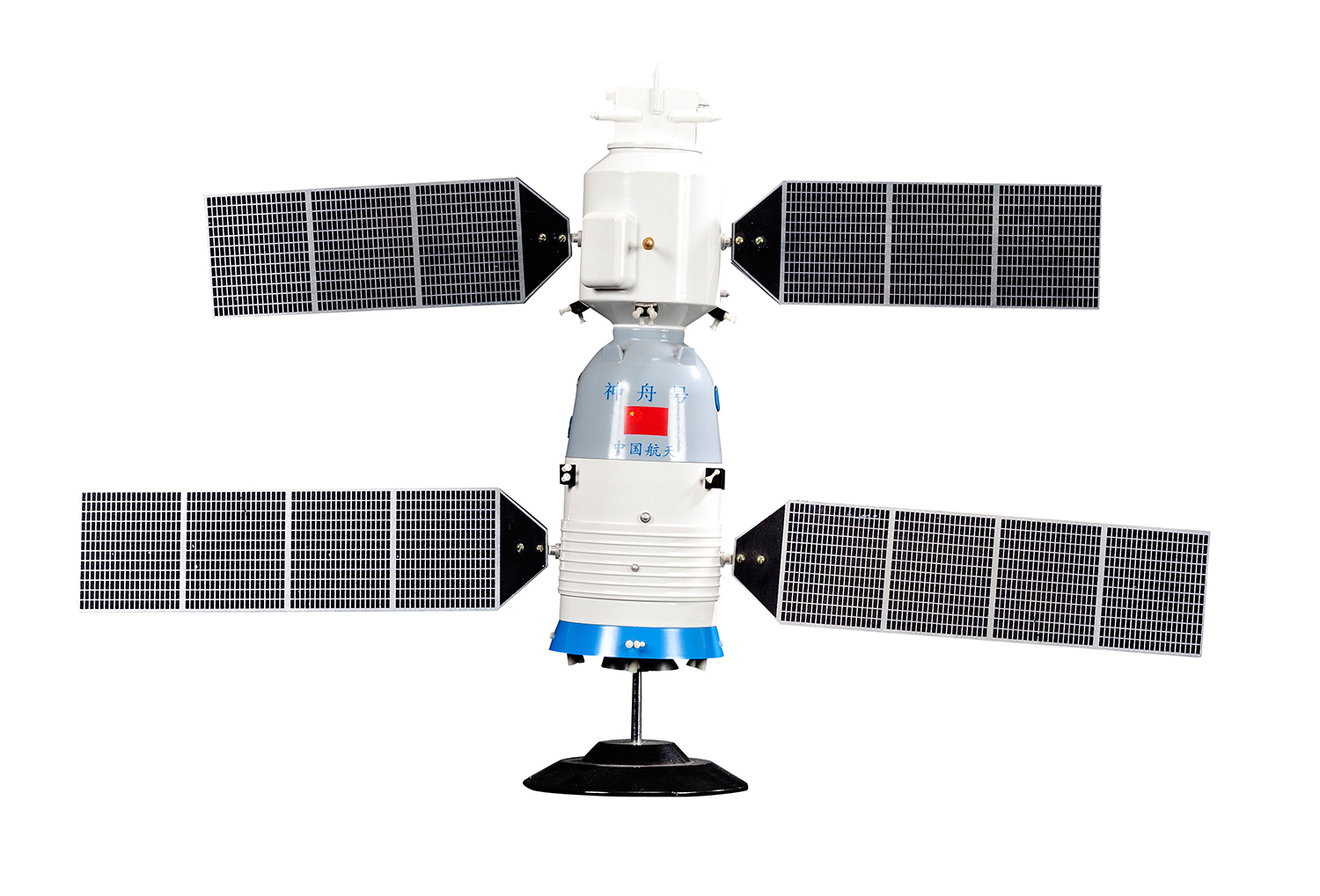“This Is My Favorite Gift”-Shenzhou 1 Spacecraft Model Sent by Wang Yongzhi
2015年09月28日

Qian Xuesen was not only a talented scientist, but also made great contributions to cultivating talent, and was an excellent teacher with many students scattered all over the world. The young scientific workers who once received his warm instruction and promotion at that time all have become very famous. We can learn of two representatives of them in the NO.1 Exhibition Hall:
One is Sun Jiadong. In 1951, Sun Jiadong flew to the Soviet Union for airplane design study. After his return to China with seven years’ study, Sun Jiadong was assigned to work in the Fifth Institute. When Qian Xuesen travelled to the Soviet Union for investigation, Sun Jiadong acted as Qian’s Russian interpreter, and his profound knowledge and brilliant talent was highly appreciated by the quick-sighted Qian Xuesen.
In 1967, Qian Xuesen was ordered to set up the China Academy of Space Technology, and Marshal Nie Rongzhen asked him to recommend a candidate for chief designer of China’s first manmade earth satellite. Sun Jiadong was recommended.
At that time, Sun Jiadong was just 38 years old, young and vigorous. Sun Jiadong did not let Qian Xuesen down. Once he took on the position, he selected 18 core members, determined the final overall plan, and carried out the development task in a solid way.
On April 24, 1970, China’s first man-made satellite was launched into sky, making the whole country filled with joy.
Sun Jiadong paid back Qian Xuesen’s recommendation with his actual achievements. Qian Xuesen was glad to see that and said, “It was correct to recommend Sun Jiadong to assume that role. He is brave and capable enough to do important tasks.”
Later on, Sun Jiadong made more achievements: acting as the chief designer and chief leader of almost 40 satellites and chief designer of the lunar exploration program and the Beidou Satellite navigation project, always actively participating in the forefront of aerospace technology.
Although he produced significant results along the way, Sun Jiadong never forgot his teacher who guided him into the path of aerospace and provide him with strong support. On December 10, 2004, the day before Qian Xuesen’s 93rd birthday, Sun Jiadong brought a special gift and paid Qian Xuesen a visit:
The gift he gave Qian Xuesen was neither wine nor flowers, but a selenographic globe. At the same time, he reported the process of lunar exploration to Qian Xuesen with the help of that globe.
Qian Xuesen was very glad to see this gift, took a photo with Sun Jiadong to celebrate their gathering, and asked his family member to place the selenographic globe in a conspicuous position on his bookshelf.
The other is Wang Yongzhi. In 1952, he was admitted into the aviation department of Tsinghua University, and later flew to the Soviet Union for further study. He was assigned to work in the Fifth Institute after his return. In June, 1964, what Wang Yongzhi showed during the second flight test of a mid-and-short-range missile impressed Qian Xuesen a lot.
When calculating the ballistic trajectory prior to testing, on-site workers discovered that the firing range was too short. Although the majority considered adding more propellant, the capacity of its storage tank was not large enough to contain more. Wang Yongzhi, a 32-year-old lieutenant, daring to think and express his idea, proposed a method completely different from that of experts: discharge 600kg of ethyl alcohol to reduce the total weight of the missile and increase its firing range correspondingly.
The experts thought his method to be invalid and ignored him. However, Wang Yongzhi was not downhearted, but wound up his courage to meet Qian Xuesen, vice director of the Fifth Institute. While listening to his proposal, Qian Xuesen made relevant calculations, thought it “make sense”, and said to the chief designer, “This young man’s idea was based on science, and now try again according to his instructions!”
At last, successive three firings of the missile all fell within the target area, confirming Wang Yongzhi’ s idea and Qian Xuesen’s judgement.
Qian Xuesen showed full affirmation toward his “reverse thinking” and praised him of his bold thought, “being different from others”. Since then, Wang Yongzhi made more innovations and often received solid support from Qian Xuesen. In 1992, when the manned space flight project was to start, Qian Xuesen recommended Wang Yongzhi once again to assume chief design of that project.
Wang Yongzhi succeeded in carrying out the important assignment. In November 1999, Wang Yongzhi led the whole team to send the Shenzhou 1 spacecraft into outer space. Because Qian Xuesen’s 88th birthday was to come at that period, Wang Yongzhi brought the spacecraft model and birthday card to visit his teacher.
Qian Xuesen liked that spacecraft model so much that he placed it on his bookshelf so as to see it when he woke up in the morning. At the same time, he said, “this is my favourite gift”. As we all know, Qian Xuesen had not cared about material comfort or wealth, and what pleased him most was the rapid growth of the aerospace undertaking and its large number of talented successors.
